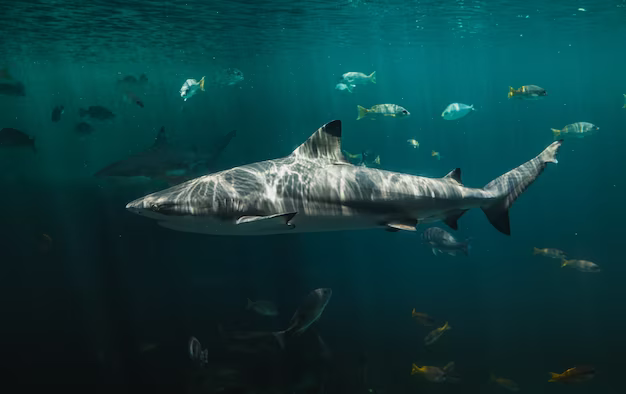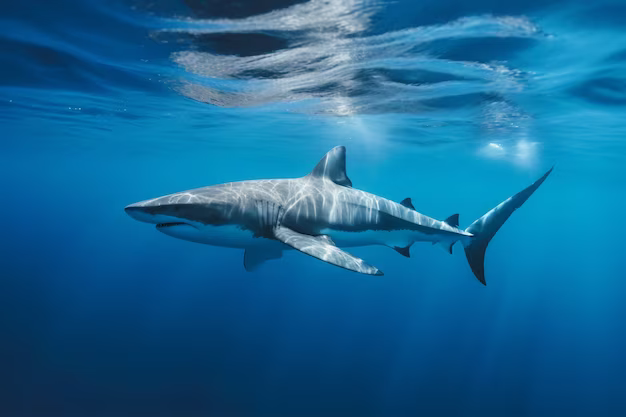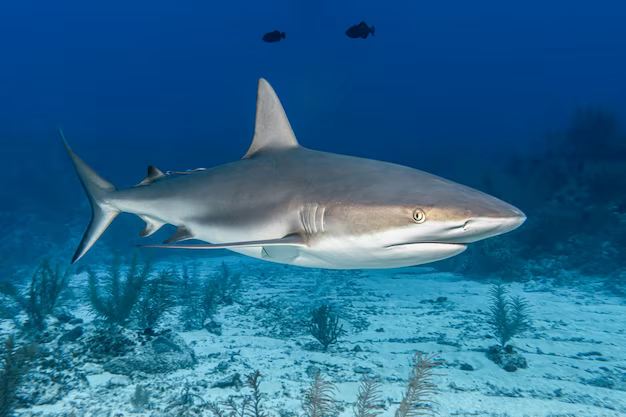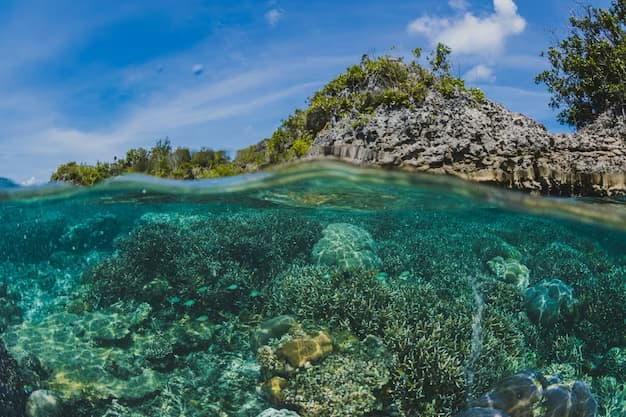Sharks are fascinating creatures that have captured the imagination of people for centuries. These enigmatic and often misunderstood fish have a unique set of characteristics that set them apart from other marine life. One such characteristic is their ability to swim. While sharks are known for their powerful and swift movements, there is a common question that arises: can sharks swim backwards? This article aims to explore the intricacies of shark locomotion, shedding light on why sharks cannot swim backwards, the anatomy behind their movement, and whether there are exceptions to this rule.
How Do Sharks Swim?
Sharks are a diverse group, with over 500 species displaying a wide range of anatomical adaptations. Despite these differences, there are fundamental aspects of their locomotion that remain consistent across most species. The streamlined, torpedo-shaped body of sharks allows for efficient movement through the water. To propel themselves, sharks utilize a side-to-side motion known as undulating. This movement is facilitated by their pectoral fins, which act as stabilizers and aid in rapid maneuvering. Additionally, the tail of most sharks is heterocercal, meaning it is separated into two lobes, with the upper lobe being larger than the lower. This distinct tail structure provides sharks with precise control over their swimming angle and propulsion.
Anatomy of Shark Locomotion
The anatomy of sharks plays a crucial role in their ability to navigate the ocean with precision and speed. Their streamlined bodies reduce drag, allowing them to move effortlessly through the water. The undulating motion generated by their powerful tails propels them forward, while the pectoral fins provide stability and agility. This combination of anatomical features enables sharks to be formidable hunters and efficient swimmers, making them apex predators in their marine ecosystems.
Adaptations for Efficient Movement
Many shark species have evolved specific adaptations tailored to their respective environments. For instance, pelagic sharks, which inhabit open ocean waters, possess elongated bodies and long, sweeping tails that enable them to cover vast distances with minimal effort. In contrast, reef-dwelling sharks often have shorter, more muscular bodies, allowing them to navigate complex underwater terrain with ease. These adaptations showcase the remarkable diversity within the shark family and highlight their exceptional ability to thrive in various aquatic habitats.
Common Anatomical Features of Shark Locomotion
| Feature | Function |
|---|---|
| Streamlined body | Reduces drag and enhances speed during movement |
| Undulating motion | Side-to-side movement generated by the tail for forward propulsion |
| Pectoral fins | Provide stability and assist in rapid maneuvering |
| Heterocercal tail | Allows precise control over swimming angle and propulsion |
Why Can’t Sharks Swim Backwards?
Despite their remarkable swimming abilities, sharks are unable to perform one particular movement that many other fish can: swimming backwards. This limitation stems from their unique anatomical structure and the mechanics of their locomotion. While sharks possess the capability to move in any direction, including vertically and upside down, the physical constraints of their bodies prevent them from executing backward movement.
Pectoral Fins
One of the primary reasons sharks cannot swim backwards lies in the functionality of their pectoral fins. Unlike some fish that can reverse using their pectoral fins, sharks rely on these structures primarily for stability and steering. The design of their pectoral fins, while essential for agile navigation, does not lend itself to the intricate movements required for sustained backward swimming. As a result, sharks are predominantly oriented towards forward motion, utilizing their undulating propulsion to navigate their surroundings effectively.
Swim Bladder
Another factor contributing to the inability of sharks to swim backwards is the absence of a swim bladder. This gas-filled organ, commonly found in bony fish, serves to regulate buoyancy and facilitate precise control over vertical movements, including ascending, descending, and maintaining position. In the absence of a swim bladder, sharks rely on their large, oil-rich livers to achieve neutral buoyancy. While this adaptation allows sharks to remain suspended in the water column with minimal effort, it does not provide the buoyant support necessary for sustained backward swimming.

Factors Contributing to Sharks’ Inability to Swim Backwards
- Pectoral fins optimized for stability and steering, limiting intricate movements required for backward swimming;
- Lack of a swim bladder, which hinders precise control over buoyancy and vertical movements necessary for sustained backward swimming.
Are There Any Sharks That Can Move Backward?
While the majority of shark species adhere to the general rule of being unable to swim backwards, there are a few exceptions within the shark family. Two notable examples of sharks capable of limited backward movement are nurse sharks and bamboo sharks. These species exhibit unique adaptations that allow them to navigate in reverse, albeit with certain limitations.
Nurse Sharks
Nurse sharks possess a distinctive mode of locomotion that enables them to move both forward and backward. Their elongated, cat-like bodies and highly flexible pectoral fins grant them the ability to execute reverse movements with surprising agility. This adaptability allows nurse sharks to explore confined spaces, such as coral reefs and crevices, where traditional forward swimming may be impractical.
Bamboo Sharks
Similarly, bamboo sharks are known for their ability to maneuver in reverse, owing to their elongated bodies and specialized fin morphology. Their slender build and elongated tail contribute to their capacity for reverse propulsion, providing them with enhanced maneuverability in tight or obstructed environments. This unique attribute allows bamboo sharks to thrive in shallow coastal waters and navigate intricate reef systems with ease.
Sharks Capable of Limited Backward Movement
| Shark Species | Unique Adaptations for Reverse Movement |
|---|---|
| Nurse Sharks | Elongated, cat-like bodies and highly flexible pectoral fins |
| Bamboo Sharks | Slender build, elongated tail, and specialized fin morphology |
What Would Happen If a Shark Swims Backward?
Given the inherent limitations of sharks when it comes to swimming backward, the question arises: what would happen if a shark were to attempt reverse movement? While sharks are incredibly adept at forward propulsion and precise maneuvering, swimming backward presents significant challenges due to their anatomical constraints.
Disruption of Efficient Locomotion
If a shark were to attempt sustained backward swimming, it would likely experience a considerable disruption in its natural locomotion. The undulating motion that propels sharks forward is optimized for efficient movement in their aquatic environment. Reversing this motion would require a complete reconfiguration of their muscle coordination and tail dynamics, potentially leading to decreased speed and agility.
Increased Energy Expenditure
In addition to the mechanical challenges, swimming backward would demand a higher energy expenditure from the shark. The unfamiliar movement pattern would necessitate greater muscular effort and coordination, resulting in increased metabolic demands. This heightened energy requirement could impact the shark’s overall fitness and hunting capabilities, potentially affecting its ability to secure prey and navigate its habitat effectively.
Vulnerability to Predators
Furthermore, the act of swimming backward could render a shark more vulnerable to potential threats. As an apex predator, a shark’s proficiency in forward propulsion is integral to its hunting strategies and defensive maneuvers. Engaging in backward swimming could compromise its ability to swiftly pursue prey or evade aggressive encounters, potentially exposing the shark to increased risk within its ecosystem.

What Happens If a Shark Stops Swimming?
While sharks are renowned for their continuous forward movement, there are instances where they may temporarily cease swimming. Understanding the implications of stationary behavior in sharks provides valuable insights into their physiological adaptations and survival strategies.
Buoyancy Regulation
When a shark stops swimming, it relies on its large, oil-rich liver to maintain neutral buoyancy. This organ serves as a vital buoyancy aid, allowing the shark to remain suspended in the water column without sinking or rising. By carefully regulating its body position and the distribution of its weight, a stationary shark can conserve energy while conserving its position in the water.
Respiratory Adaptations
During periods of immobility, sharks continue to respire by extracting oxygen from the surrounding water through their gills. Their efficient respiratory system enables them to extract dissolved oxygen even when stationary, ensuring a constant supply of oxygen to support their metabolic needs. This adaptation allows sharks to remain motionless for extended periods without compromising their respiratory function.
Sensory Awareness
Even when stationary, sharks remain highly attuned to their surroundings, relying on their acute sensory perception to detect potential prey, predators, or environmental cues. Their keen sense of smell, electroreception, and lateral line system enable them to monitor changes in their environment, facilitating rapid responses to stimuli even in a state of rest.
Conclusion
In conclusion, the question of whether sharks can swim backwards unveils the intricate interplay between their anatomy, locomotion, and ecological adaptations. While sharks exhibit unparalleled swimming prowess and predatory efficiency, their inability to swim backwards is rooted in the specialized design of their bodies and the mechanics of their movement. Exceptions such as nurse sharks and bamboo sharks offer glimpses into the diverse capabilities within the shark family, showcasing the remarkable adaptability of these ancient creatures. Understanding the nuances of shark locomotion not only enriches our knowledge of marine life but also fosters a deeper appreciation for the awe-inspiring adaptations that have allowed sharks to thrive for millions of years in the world’s oceans.



